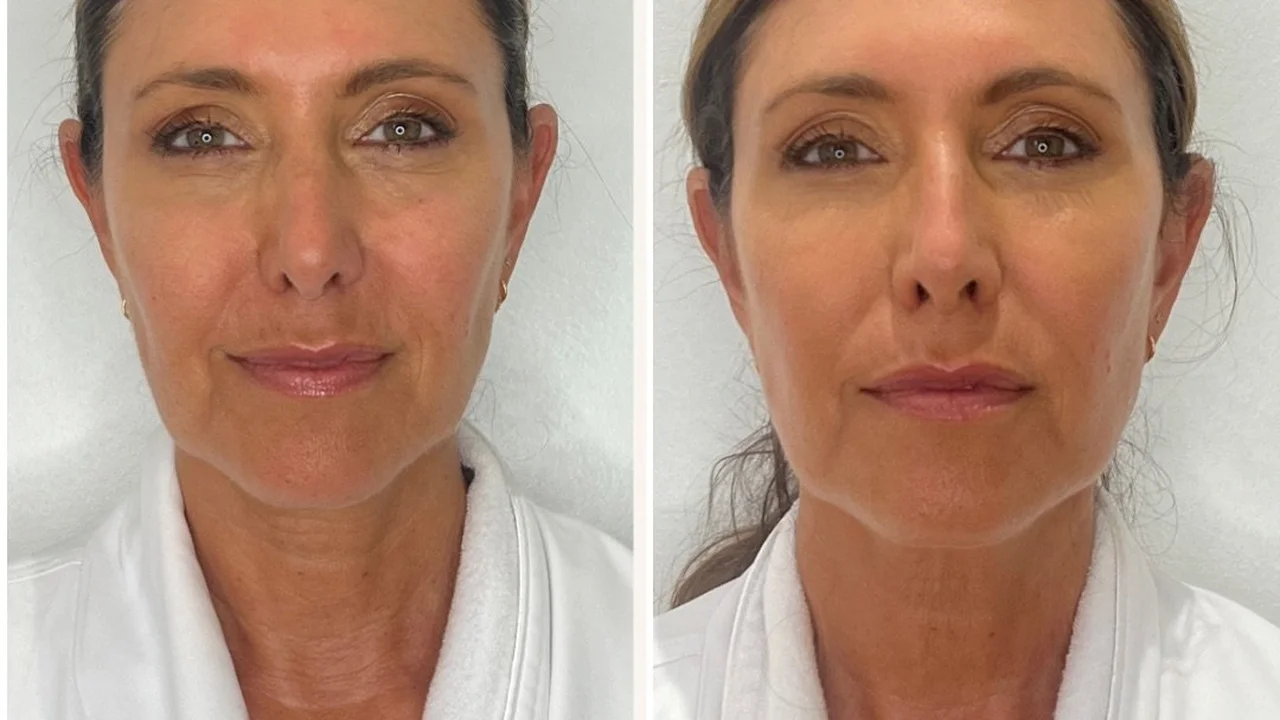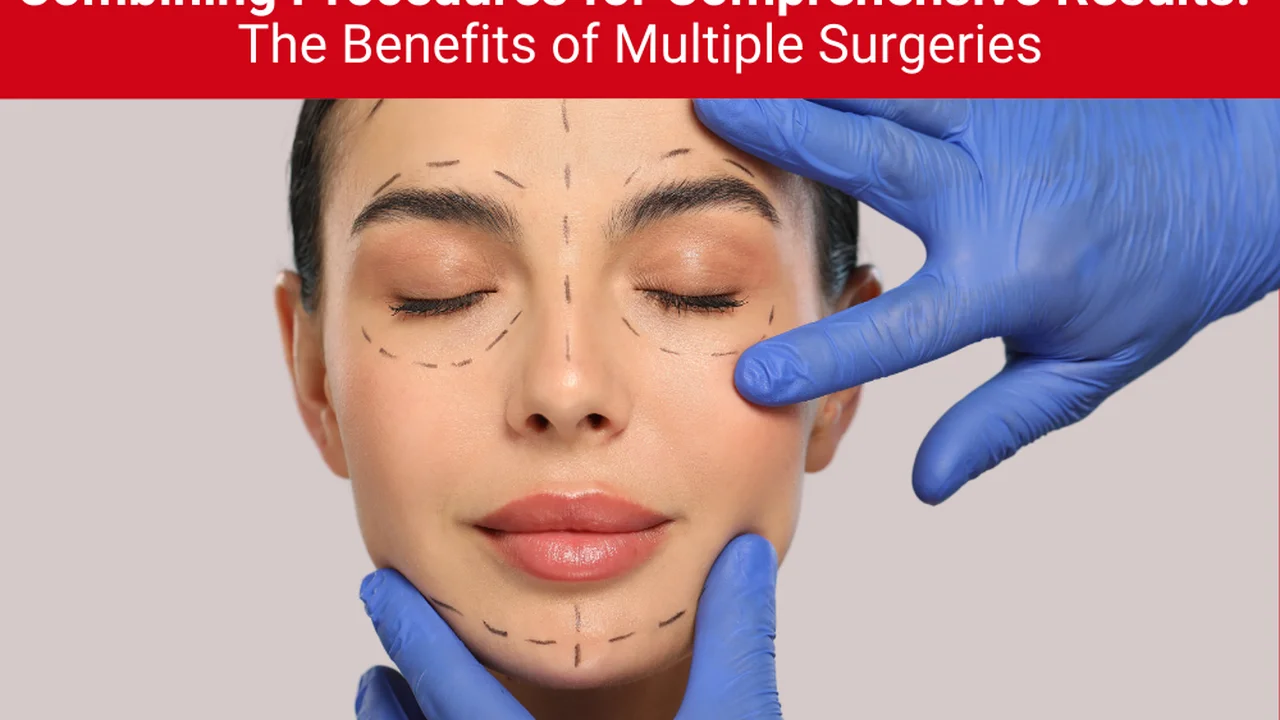Chin Augmentation: Enhancing Facial Balance

for the sixth article in the Surgical Facial Rejuvenation category focusing on a specific surgical procedure and related product recommendations.
Understanding the Landscape of Surgical Facial Rejuvenation Procedures
Surgical facial rejuvenation encompasses a wide array of procedures designed to address the visible signs of aging and enhance facial aesthetics. These procedures range from minimally invasive techniques to more extensive surgical interventions, each targeting specific areas and concerns. Before diving into the specifics of our featured procedure and product recommendations, it's crucial to understand the broader context of facial rejuvenation surgery.
Common procedures include facelift surgery (rhytidectomy), brow lift (forehead lift), eyelid surgery (blepharoplasty), and neck lift (platysmaplasty). Each of these procedures addresses distinct aspects of facial aging, such as sagging skin, wrinkles, and volume loss. The choice of procedure depends on the individual's unique anatomy, desired outcome, and the severity of their aging concerns.
Facial implants, such as chin implants and cheek implants, are also frequently used in facial rejuvenation to enhance facial contours and improve overall facial balance. These implants can address concerns such as a weak chin, flat cheeks, or asymmetry. The use of facial implants can significantly enhance the results of other facial rejuvenation procedures, creating a more harmonious and youthful appearance.
Beyond surgical procedures, non-surgical treatments such as Botox injections and dermal fillers play a significant role in facial rejuvenation. While these treatments cannot achieve the same dramatic results as surgery, they can effectively address fine lines, wrinkles, and volume loss, providing a temporary but noticeable improvement in facial appearance. Many patients choose to combine surgical and non-surgical treatments to achieve comprehensive facial rejuvenation.
The Role of [Specific Procedure, e.g., Cheek Augmentation] in Facial Harmony
Let's focus on a specific surgical facial rejuvenation procedure: [Specific Procedure, e.g., Cheek Augmentation]. This procedure involves surgically enhancing the cheek area to restore volume, improve facial contours, and create a more youthful and balanced appearance. [Specific Procedure, e.g., Cheek Augmentation] can be performed using implants or fat grafting, depending on the patient's individual needs and preferences.
Cheek augmentation with implants typically involves placing silicone or other biocompatible implants through small incisions inside the mouth or along the hairline. The implants add volume to the cheekbones, creating a more defined and sculpted appearance. This procedure is particularly effective for patients who have naturally flat cheeks or have experienced volume loss due to aging.
Fat grafting, also known as fat transfer, involves harvesting fat from other areas of the body, such as the abdomen or thighs, and injecting it into the cheek area. This procedure offers a more natural-looking result, as it uses the patient's own tissue to augment the cheeks. Fat grafting can also improve skin texture and quality, as the injected fat contains stem cells that promote tissue regeneration.
The choice between implants and fat grafting depends on several factors, including the patient's desired outcome, the amount of volume needed, and the surgeon's expertise. Implants offer a more predictable and consistent result, while fat grafting provides a more natural-looking and customizable outcome. A thorough consultation with a qualified facial plastic surgeon is essential to determine the best approach for each individual patient.
Exploring Different Types of [Specific Procedure, e.g., Cheek] Implants for Facial Enhancement
When considering [Specific Procedure, e.g., Cheek] augmentation with implants, it's crucial to understand the different types of implants available. The most common types of cheek implants are made of silicone, polyethylene, or Gore-Tex. Each material has its own advantages and disadvantages, and the choice of material depends on the surgeon's preference and the patient's individual needs.
Silicone implants are the most widely used type of cheek implant. They are biocompatible, durable, and easy to insert and remove. Silicone implants come in a variety of shapes and sizes, allowing surgeons to customize the procedure to achieve the desired outcome. However, silicone implants can sometimes shift or rotate over time, requiring revision surgery.
Polyethylene implants are another popular option for cheek augmentation. They are also biocompatible and durable, but they have a porous surface that allows tissue to grow into the implant, creating a more secure and stable result. Polyethylene implants are less likely to shift or rotate than silicone implants, but they can be more difficult to remove if necessary.
Gore-Tex implants are made of expanded polytetrafluoroethylene (ePTFE), a soft and flexible material that is also used in vascular grafts. Gore-Tex implants are biocompatible and provide a natural-feeling result. They are less likely to cause irritation or inflammation than other types of implants. However, Gore-Tex implants can be more expensive than silicone or polyethylene implants.
The shape and size of the cheek implant are also important considerations. Implants come in a variety of shapes, including round, anatomical, and teardrop. The choice of shape depends on the patient's facial structure and the desired outcome. The size of the implant is determined by the amount of volume needed to achieve the desired result. A skilled facial plastic surgeon can help you choose the best type of implant for your individual needs.
[Specific Procedure, e.g., Cheek Augmentation] Product Recommendation: [Product Name] Implants
For [Specific Procedure, e.g., Cheek] augmentation, we recommend [Product Name] implants. These implants are made of [Material, e.g., solid silicone] and are known for their [Key features, e.g., durability, biocompatibility, and natural-looking results]. [Product Name] implants are available in a wide range of shapes and sizes, allowing surgeons to customize the procedure to achieve the desired outcome for each patient.
[Product Name] implants are designed with a smooth surface that minimizes the risk of irritation and inflammation. They are also easy to insert and remove, making them a popular choice among facial plastic surgeons. The implants are rigorously tested for safety and efficacy, ensuring that they meet the highest standards of quality.
One of the key advantages of [Product Name] implants is their ability to provide a natural-looking result. The implants are designed to blend seamlessly with the surrounding tissues, creating a subtle but noticeable improvement in facial contours. Patients who choose [Product Name] implants often report feeling more confident and satisfied with their appearance.
Before undergoing [Specific Procedure, e.g., Cheek] augmentation with [Product Name] implants, it's essential to consult with a qualified facial plastic surgeon. The surgeon will assess your facial structure, discuss your goals and expectations, and determine if [Product Name] implants are the right choice for you. The surgeon will also explain the risks and benefits of the procedure and answer any questions you may have.
Detailed Product Specifications of [Product Name] Implants
Let's delve into the detailed specifications of [Product Name] implants. These implants are available in a variety of sizes and shapes to accommodate different facial structures and desired outcomes. Each implant is meticulously crafted to ensure optimal biocompatibility and aesthetic results.
- Material: [Specific material, e.g., Medical-grade solid silicone elastomer]
- Shapes: [List available shapes, e.g., Round, Anatomical, Extended Anatomical]
- Sizes: [Provide a range of sizes, e.g., Small, Medium, Large, Extra Large] - with specific dimensions in mm (e.g., Projection: 4mm - 10mm, Width: 25mm - 35mm) for each size.
- Surface Texture: [Describe the surface, e.g., Smooth, to minimize tissue irritation]
- Biocompatibility: [Mention certifications and testing, e.g., ISO 10993 certified for biocompatibility]
- Sterilization: [Explain the sterilization method, e.g., Sterilized by gamma irradiation]
- Packaging: [Describe the packaging, e.g., Individually packaged in sterile double pouches]
- Warranty: [Mention any warranty information, e.g., Manufacturer's limited lifetime warranty]
The [Product Name] implant line also includes specialized instruments designed to facilitate accurate placement and minimize trauma during surgery. These instruments are made of high-quality stainless steel and are ergonomically designed for ease of use.
Ideal Candidates for [Specific Procedure, e.g., Cheek Augmentation] with [Product Name] Implants
Not everyone is an ideal candidate for [Specific Procedure, e.g., Cheek] augmentation with [Product Name] implants. The best candidates are individuals who:
- Have naturally flat or underdeveloped cheeks.
- Have experienced volume loss in the cheek area due to aging.
- Desire to improve facial contours and balance.
- Are in good overall health.
- Have realistic expectations about the outcome of the procedure.
- Do not have any active infections or skin conditions in the treatment area.
It's important to note that [Specific Procedure, e.g., Cheek] augmentation is not a substitute for a healthy lifestyle. Patients who smoke, have uncontrolled diabetes, or have other medical conditions may not be good candidates for the procedure.
[Specific Procedure, e.g., Cheek Augmentation] Procedure Details with [Product Name] Implants
The [Specific Procedure, e.g., Cheek] augmentation procedure with [Product Name] implants typically takes about one to two hours to perform. The procedure can be performed under local anesthesia with sedation or general anesthesia, depending on the patient's preference and the surgeon's recommendation.
The surgeon will make small incisions inside the mouth or along the hairline to create a pocket for the implant. The [Product Name] implant will then be carefully inserted into the pocket and positioned to achieve the desired aesthetic result. The incisions will be closed with sutures.
After the procedure, patients can expect some swelling, bruising, and discomfort. Pain medication can help manage the discomfort. Patients will be instructed to avoid strenuous activity and follow a soft diet for several days after the procedure. Most patients can return to work and other normal activities within one to two weeks.
Post-Operative Care and Recovery After [Specific Procedure, e.g., Cheek Augmentation]
Proper post-operative care is crucial for a successful recovery after [Specific Procedure, e.g., Cheek] augmentation. Following your surgeon's instructions carefully will help minimize complications and ensure optimal results.
Here are some important post-operative care guidelines:
- Pain Management: Take pain medication as prescribed to manage discomfort.
- Swelling and Bruising: Apply cold compresses to the cheek area to reduce swelling and bruising. Keep your head elevated while sleeping.
- Oral Hygiene: Rinse your mouth with an antiseptic mouthwash after meals to prevent infection.
- Diet: Follow a soft diet for the first few days after the procedure. Avoid chewing hard or crunchy foods.
- Activity Restrictions: Avoid strenuous activity and heavy lifting for several weeks after the procedure.
- Follow-Up Appointments: Attend all scheduled follow-up appointments with your surgeon to monitor your progress.
It's important to contact your surgeon immediately if you experience any signs of infection, such as fever, redness, or excessive pain.
Potential Risks and Complications Associated with [Specific Procedure, e.g., Cheek Augmentation]
Like any surgical procedure, [Specific Procedure, e.g., Cheek] augmentation carries potential risks and complications. While these complications are rare, it's important to be aware of them before undergoing the procedure.
Possible risks and complications include:
- Infection: Infection is a risk with any surgical procedure. Antibiotics can be used to treat infection.
- Bleeding: Excessive bleeding can occur during or after the procedure.
- Nerve Damage: Nerve damage can cause numbness or tingling in the cheek area. This is usually temporary, but it can be permanent in rare cases.
- Implant Shifting: The implant can shift or rotate out of position, requiring revision surgery.
- Capsular Contracture: The body can form a capsule of scar tissue around the implant, causing it to become firm and distorted. This can be treated with massage or revision surgery.
- Asymmetry: The cheeks may not be perfectly symmetrical after the procedure.
- Poor Scarring: Scars can be visible, raised, or discolored.
- Dissatisfaction with Results: Some patients may be dissatisfied with the aesthetic outcome of the procedure.
A thorough consultation with a qualified facial plastic surgeon is essential to discuss these risks and complications and determine if [Specific Procedure, e.g., Cheek] augmentation is the right choice for you.
[Product Name] Implants: Pricing and Availability Information
The cost of [Specific Procedure, e.g., Cheek] augmentation with [Product Name] implants can vary depending on several factors, including the surgeon's fees, anesthesia fees, and facility fees. The cost of the implants themselves also contributes to the overall price.
On average, [Specific Procedure, e.g., Cheek] augmentation with [Product Name] implants can range from $[Price range, e.g., 5,000] to $[Price range, e.g., 10,000].] It's important to obtain a detailed cost estimate from your surgeon before undergoing the procedure.
[Product Name] implants are available through authorized distributors and medical supply companies. Surgeons can order the implants directly from the manufacturer or through their preferred supplier. It's important to ensure that the implants are authentic and properly sterilized before use.
Many surgeons offer financing options to help patients manage the cost of [Specific Procedure, e.g., Cheek] augmentation. You can also explore other financing options, such as medical credit cards or personal loans.
Comparing [Product Name] Implants with Other [Specific Procedure, e.g., Cheek] Implant Options
While [Product Name] implants are a popular choice for [Specific Procedure, e.g., Cheek] augmentation, it's important to consider other implant options and compare their features and benefits. Some alternative implant brands include [Competitor Brand 1] and [Competitor Brand 2].
Here's a comparison of [Product Name] implants with [Competitor Brand 1] and [Competitor Brand 2] based on key factors:
| Feature | [Product Name] Implants | [Competitor Brand 1] Implants | [Competitor Brand 2] Implants |
|---|---|---|---|
| Material | [Material, e.g., Solid Silicone] | [Competitor Material, e.g., Porous Polyethylene] | [Competitor Material, e.g., ePTFE (Gore-Tex)] |
| Shapes and Sizes | [Describe range, e.g., Wide range of shapes and sizes] | [Describe range, e.g., Limited range of shapes and sizes] | [Describe range, e.g., Moderate range of shapes and sizes] |
| Biocompatibility | [Describe biocompatibility, e.g., Excellent biocompatibility] | [Describe biocompatibility, e.g., Excellent biocompatibility] | [Describe biocompatibility, e.g., Excellent biocompatibility] |
| Ease of Insertion | [Describe ease, e.g., Easy to insert and remove] | [Describe ease, e.g., Can be more difficult to remove] | [Describe ease, e.g., Moderate ease of insertion] |
| Price | [Describe price, e.g., Moderate price range] | [Describe price, e.g., Higher price range] | [Describe price, e.g., Moderate to high price range] |
The best implant option for you will depend on your individual needs and preferences. A consultation with a qualified facial plastic surgeon is essential to discuss your options and determine the most suitable implant for your specific case.
[Specific Procedure, e.g., Cheek Augmentation] and Facial Aging: A Long-Term Perspective
Understanding how facial aging affects the results of [Specific Procedure, e.g., Cheek] augmentation is crucial for long-term satisfaction. While [Specific Procedure, e.g., Cheek] augmentation can significantly improve facial contours and balance, it's important to remember that the aging process continues over time.
As you age, your skin will continue to lose elasticity, and your facial tissues will continue to descend. This can affect the appearance of your [Specific Procedure, e.g., Cheek] implants over time. In some cases, additional procedures may be necessary to maintain the desired aesthetic result.
To minimize the effects of aging on your [Specific Procedure, e.g., Cheek] augmentation results, it's important to:
- Maintain a healthy lifestyle.
- Protect your skin from sun damage.
- Consider non-surgical treatments, such as Botox and dermal fillers, to address fine lines and wrinkles.
- Consult with your surgeon regularly to monitor your results and discuss any concerns.
[Specific Procedure, e.g., Cheek] augmentation can provide long-lasting benefits, but it's important to have realistic expectations and understand the role of aging in the long-term outcome.
The Future of [Specific Procedure, e.g., Cheek Augmentation] and Facial Rejuvenation Technology
The field of facial rejuvenation is constantly evolving, with new technologies and techniques emerging regularly. The future of [Specific Procedure, e.g., Cheek] augmentation and facial rejuvenation holds exciting possibilities.
Some of the emerging trends in facial rejuvenation include:
- 3D Printing of Implants: 3D printing technology allows for the creation of custom-designed implants that are perfectly tailored to the individual patient's anatomy.
- Biomaterials: New biomaterials are being developed that are more biocompatible and offer improved aesthetic results.
- Minimally Invasive Techniques: Surgeons are increasingly using minimally invasive techniques to reduce scarring and recovery time.
- Regenerative Medicine: Regenerative medicine approaches, such as stem cell therapy, are being explored to promote tissue regeneration and improve skin quality.
These advancements promise to make [Specific Procedure, e.g., Cheek] augmentation and other facial rejuvenation procedures safer, more effective, and more personalized.
Finding a Qualified Surgeon for [Specific Procedure, e.g., Cheek Augmentation]
Choosing a qualified and experienced facial plastic surgeon is essential for a successful [Specific Procedure, e.g., Cheek] augmentation. Here are some tips for finding the right surgeon:
- Board Certification: Look for a surgeon who is board-certified in facial plastic surgery or plastic surgery.
- Experience: Choose a surgeon who has extensive experience performing [Specific Procedure, e.g., Cheek] augmentation.
- Before and After Photos: Review the surgeon's before and after photos to assess their aesthetic skills.
- Patient Reviews: Read online reviews to get feedback from other patients.
- Consultation: Schedule a consultation with the surgeon to discuss your goals and expectations.
- Communication: Choose a surgeon who is a good communicator and makes you feel comfortable.
Don't be afraid to ask questions and do your research. Choosing the right surgeon is the most important step in achieving a successful and satisfying outcome.
:max_bytes(150000):strip_icc()/277019-baked-pork-chops-with-cream-of-mushroom-soup-DDMFS-beauty-4x3-BG-7505-5762b731cf30447d9cbbbbbf387beafa.jpg)






